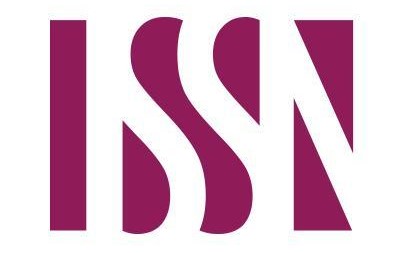تأثير تنوع أسلوبين تدريبين للقدرة الانفجارية بتباين مدة الراحة البينية في بعض المؤشرات الكهربائية (EMG) لعضلات الذراعين وأنجاز سباحة (100) حرة لسباحي منتخب العراق للشباب
محتوى المقالة الرئيسي
الملخص
هدفَ البحث إلى التعرف على التعرف على تأثير تنوع أسلوبين تدريبين للقدرة الانفجارية بتباين مدة الراحة البينية في بعض المؤشرات الكهربائية (EMG) لعضلات الذراعين وأنجاز سباحة (100) حرة لسباحي منتخب العراق للشباب، واعتمد المنهج التجريبي بتصميم المجموعة الواحدة لعينة من سباحي منتخب العراق للشباب لمسافة (100) متر حرة للموسوم الرياضي (2025-2024) البالغ عددهم (12) سباحا ولقياس الانجاز اعتمدت ساعة توقيت الكرتونية حسب شروط المنافسة، وكان التجريب بأسلوبي التدريب البلايومترك والبالستك كمتغير واحداً يتم التنويع بينهما في الوحدة التدريبية نفسها، واستنتج الباحث بإنه لتنوع الأسلوبين التدريبين للقدرة الانفجارية بتباين مدة الراحة البينية لعضلات عضدي سباحي (100) متر حرة تأثيرات إيجابية في فسيولوجيا الاشارات الكهربائية للسيطرة العصبية العضلية، لتنعكس إيجاباً على تقليل زمن إنجاز سباحتهم لهذهِ المسافة، وعليه تمت التوصية من الضروري دعم معارف المدربين المحترفين حول اهمية تباين التنويع بأساليب تدريب القدرة الانفجارية لعضلات عضدي سباحي (100) متر حرة، للخروج عن التقييدات التي تفرضها التدريبات ضمن نظام الطاقة الاول
تفاصيل المقالة

هذا العمل مرخص بموجب Creative Commons Attribution-NonCommercial 4.0 International License.
المراجع
Sylvia S. Mder. (2001). Biology (7th ed., p. 874). Boston. Includes bibliographical references and index.
Abdel-Zaher, M. M. (2014). Physiological foundations for planning training loads (Steps towards success) (p. 47). Modern Book Center.
Abu Zaid, I. A.-D. A. (2007). Planning and Scientific Foundations for Building and Preparing Teams in Team Games: Theories and Applications (2nd ed, p. 126). Maaref Establishment.
Al-Madamkha, M. R. I. (2008). Field application of theories and methods of sports training (1st edition, p. 88). Al-Fadhli Office.
Al-Mahdi, M. S. (2019). Educational Research Methods (p. 214). Dar Al-Fikr Al-Arabi.
Al-Nusairi, A. S. H. (2009). Added weight training to develop some special physical abilities and its effect on some physiological and skill indicators of young volleyball players [PhD thesis]. University of Baghdad.
Al-Qat, M. (1999). Functions of the members of the sports training (1st edition, p. 12). Dar Al-Fikr Al-Arabi.
Al-Raydi, K. J. (2001). Sports Training for the Twenty-First Century (p. 25). Department of Publications and Publishing.
Azzal, Y. H., & Ahmed, A. M. (2025). The effect of exercises using the (4D PRO) training method on the starting distance and completion of the 50-100-meter crawl swimming for juniors. Journal of Sports Education Studies and Research, 35(2), 75–89. https://doi.org/10.55998/jsrse.v35i2.1080
Baechle, T. R., & Earle, R. W. (2008). Essentials of strength training and conditioning. Human kinetics.
Hallab, N. J., Jacobs, J. J., Skipor, A., Black, J., Mikecz, K., & Galante, J. O. (2000). Systemic metal-protein binding associated with total joint replacement arthroplasty. Journal of Biomedical Materials Research, 49(3), 353–361. https://doi.org/10.1002/(SICI)1097-4636(20000305)49:3<353::AID-JBM8>3.0.CO;2-T
LAMYAA, H. M. A.-D., Mustafa, A. R. K., & Yassin, H. A. (2020). The Effect of Constructive Learning Model in Teaching the Constructive Learning of Freestyle Swimming for First Grade Students. Journal of Studies and Researches of Sport Education, 63. https://www.iasj.net/iasj/article/205247
Lewandrowski, K.-U., Gresser, J. D., Wise, D. L., White, R. L., & Trantolo, D. J. (2000). Osteoconductivity of an injectable and bioresorbable poly(propylene glycol-co-fumaric acid) bone cement. Biomaterials, 21(3), 293–298. https://doi.org/10.1016/S0142-9612(99)00180-5
Marwan, A. M. I., & Muhammad, J. A.-Y. (2004). Recent Trends in Sports Training (1st Edition, p. 106). Wael Publishing and Distribution House.
Michael W. Passer, & Ronald E. Smith. (2001). Psychology: Includes bibliographical references and index (1st ed, pp. 11–12).
Moseekh, L. Z. (2016). The effect of phosphate energy exercises on explosive power and the performance of the smash skill in volleyball. Anbar Journal of Physical and Sports Sciences, 3(12), 113–126. https://iasj.rdd.edu.iq/journals/journal/issue/261
Moseekh, L. Z., Al-Kubaisi, R. S., & Jalab, S. H. (2013). The impact of exercises on the anaerobic energy system on some enzymes, and the defense skills of volleyball. University of Anbar Sport and Physical Education Science Journal, 2(8), 301–318.
Moseekh, L. Z., Daikh, Y. A. B., & Awad, J. M. (2010). The effect of plyometric training on hard and sandy floors on developing explosive strength of the lower extremity muscles. University of Anbar Sport and Physical Education Science Journal, 1(3).
Mufti, H. (2001). Modern sports training: planning, implementation and leadership. Dar al-Fikr al-Arabi, Egypt.
Saad El-Din, M. S. (2000). Physiology of Physical Effort (p. 34). Manshaat Al-Maaref.
Sajit, H. M., & Ali, A. F. (2017). Physiology of Physical Effort (p. 62). Dar Al-Sadiq Cultural Foundation for Publishing and Distribution.
Salama, B. E.-D. I. (1999). Bio-energy representation in the sports field (p. 191). Dar Al-Fikr Al-Arabi.
Salama, B. I. (2018). Applications of Biochemistry and Energy Representation in the Sports Field (p. 179). Dar Al-Hikma.
Sayed, A. N. E.-D. (2019). Principles of Sports Physiology (3rd ed, pp. 263–264). Modern Book Publishing Center.
Tolan, S. M. et al. (2012). Scientific Foundations of Exercises and Sports Performances (p. 165). Dar Al-Wafa for the World of Printing and Publishing.
Turki, H. A. (2009). Principles of Sports Training (p. 34). Dar Al-Diaa for Printing and Design.
Wadi, A. A. A.-J., & Ikhlas, A. (2005). Fundamentals of Physiological Psychology (pp. 79–80). Jarir Publishing and Distribution House.
William J. Kraemer, & Keijo Hakkinen. (2006). Handbook of Sports Medicine and Science Strength Training for Sport (2ed ed., p. 83). Blackwell Sclsnce.
Wilmore, J. H., Costill, D. L., & Kenney, W. L. (2004). Physiology of sport and exercise (Vol. 20). Human kinetics Champaign, IL.
Yessis, M., & Hatfield, F. C. (1986). Plyometric training: Achieving power and explosiveness in sports. Sports Training, Incorporated.





 IASJ
IASJ CC-BY-4.0
CC-BY-4.0 turnitin
turnitin ISSN
ISSN DOAJ
DOAJ Crossref
Crossref GoogleScholar
GoogleScholar Orcid
Orcid